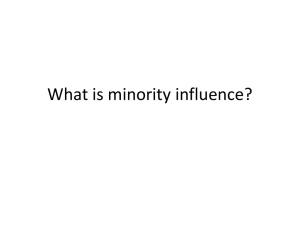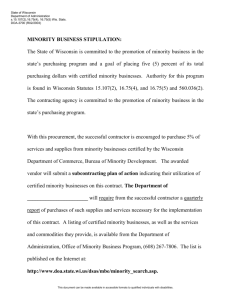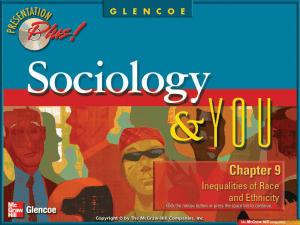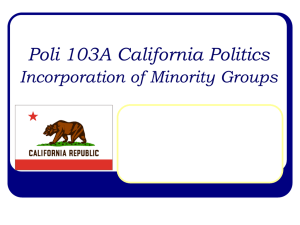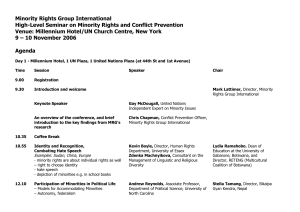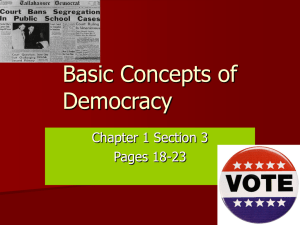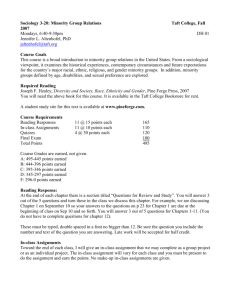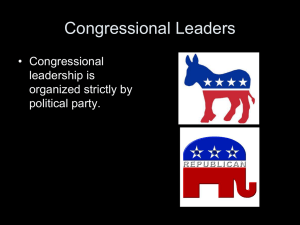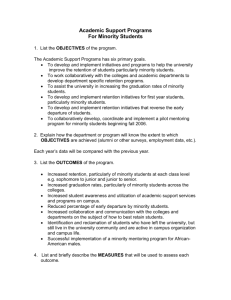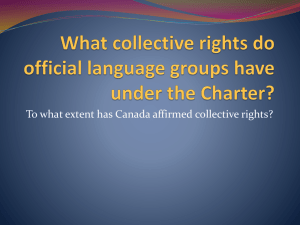Patterns of Minority Groups Treatment
advertisement
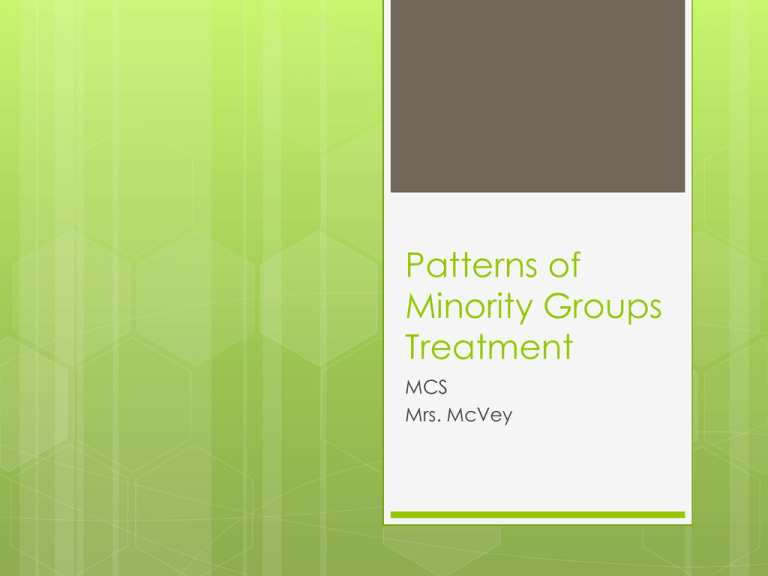
Patterns of Minority Groups Treatment MCS Mrs. McVey Minority What does the word “minority” mean? Minorities Minority: group of people with physical or cultural traits different from those of the dominant group in society Distinctive physical or cultural characteristics that can be used to separate from society Dominated by majority Often believed to inferior Common sense of identity, strong group loyalty Majority determines who belongs to minority Minority Women out number men in the United States…so why are women a minority? (Think about what the previous slide said) Race & Ethnicity RACE: People sharing certain inherited physical characteristics that are considered important within a society (how you look) ETHNICITY: group identified by cultural, religious, or national characteristics (where you come from) Melting Toss pot salad Assimilation Assimilation is the blending or fusing of minority groups into the dominant society Melting pot Tossed salad Anglo-conformity is the most common pattern of assimilation Cultural pluralism is the desire of a group to maintain some sense of identity separate from the dominant group Patterns of Conflict Genocide (most extreme): systematic effort to destroy an entire population Examples from history? Population transfer: minority is forced to move to a remote location or leave entirely Subjugation (most common): minority group is denied equal access to the benefits of society De jure segregation = by law De facto segregation = everyday practice Pluralism Policy that allows each group within a society to keep its unique cultural identitiy Example: Switzerland; three official languages, loyalty to Switzerland, one group doesn’t not have a dominate or minority role in Swiss society Assimilation Blending of culturally distinct groups into a single group with a common culture and identity Voluntary, occurs naturally over time due to daily interactions, or forced Example: Native American children sent to mission schools to help them adopt the English language, European styles of dress, and learn about Christianity Legal Protection Legal steps taken to ensure that they rights of minority groups are protected Example: Civil Rights Act of 1964, Voting Rights Act of 1965, Affirmative Action Segregation Policies that physically separate a minority group from the dominate group De jure (by law) or De Facto (societal norms like economics) Example: Jewish ghettos; Jim Crow Laws Subjugation Maintaining force Example: Africa control over a group through slavery; apartheid in South Population Transfer Indirect or direct transfer of a minority group to a new territory by the dominate group Indirect—dominate group makes life so miserable for the minority group they choose to leave the area Direct—movement to a new location with use of force or laws Example: Native American Reservations; Japanese Internment Extermination/Genocide Intentional destruction of the entire targeted population Also known as genocide or ethnic cleansing Example: Holocause Reasons for Discrimination & Prejudice Social norms: lays out ways in which members of society are expected to relate to members of certain groups Personality: authoritarians, conformists, angry, likely to blame others Scapegoating: blaming others when cause or resolution to problems is unknown or out of one’s reach Competition for scarce resources: JOBS

